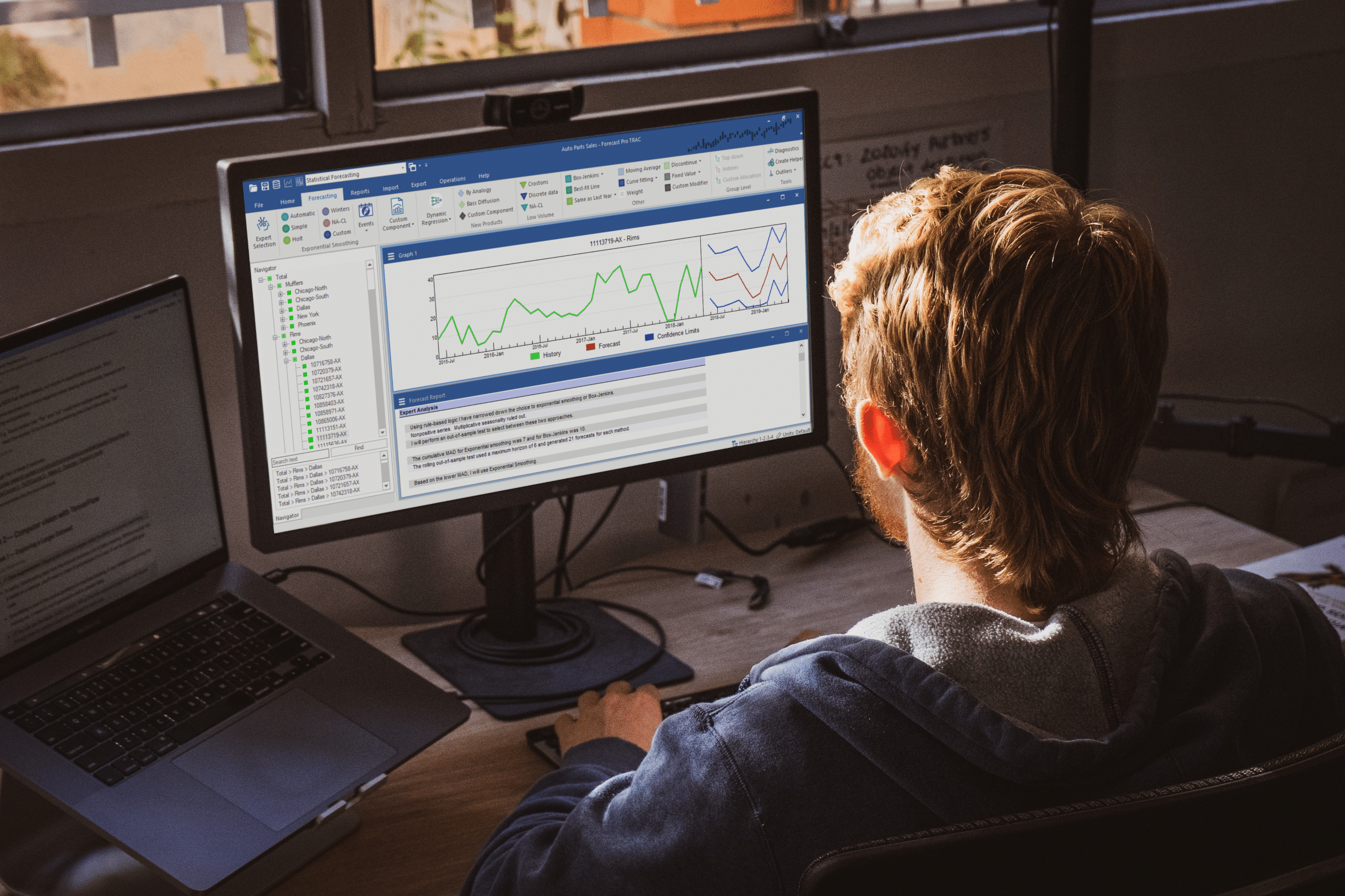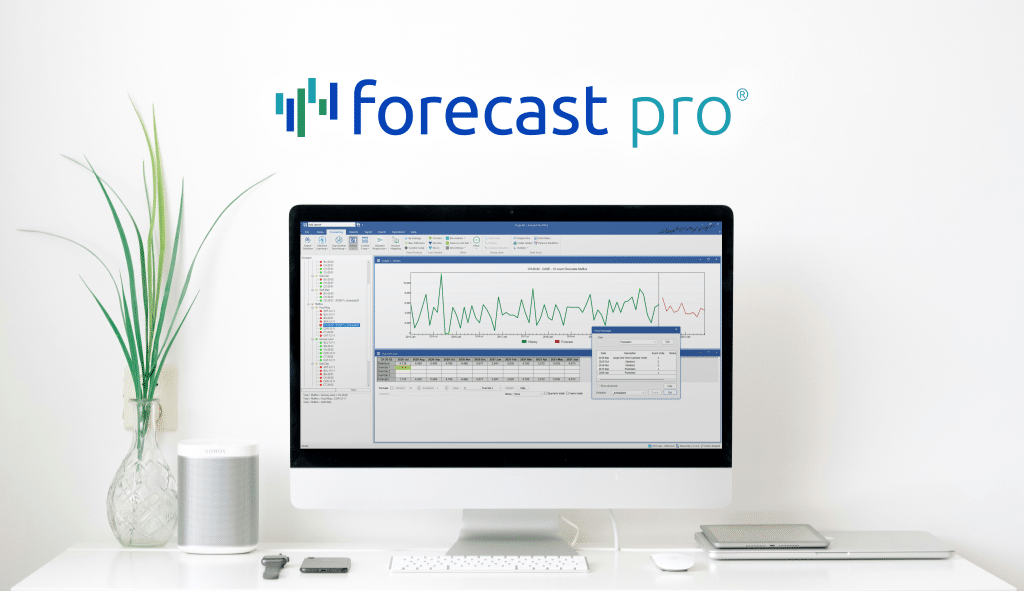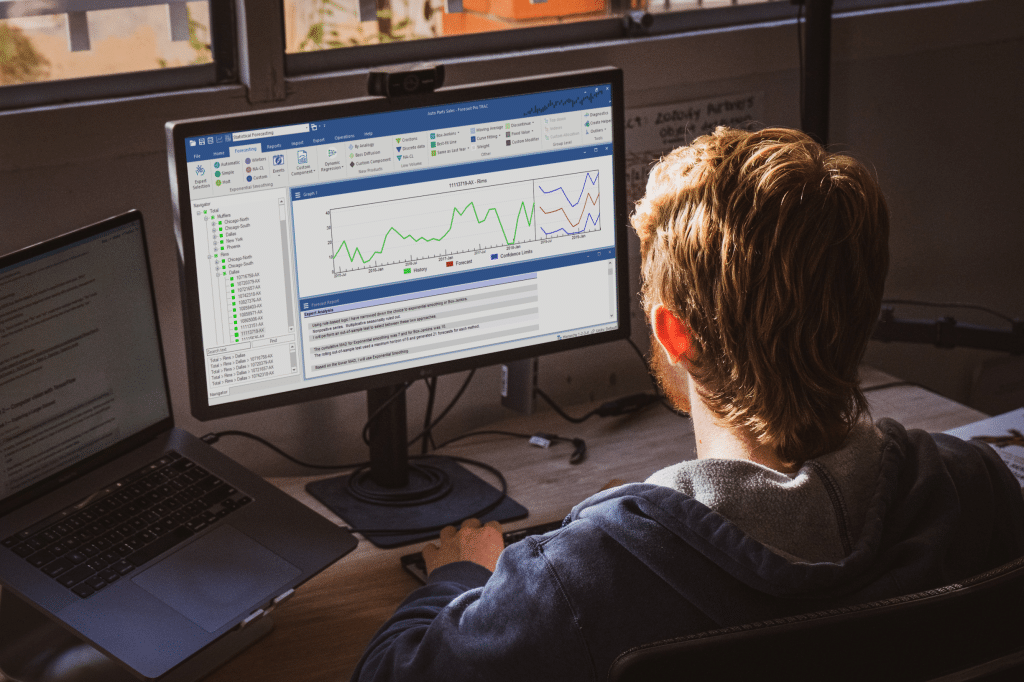Discover how leading organizations tackle forecasting challenges in our new Forecast Pro Deep Dive training series. Each 2-hour session uses a case study approach to explore a specific forecasting challenge and includes actionable insights, product demos, interactive polling and expert Q&A.
You’ll leave each session with a clear understanding of best practices for setting up your forecasting process and with the insights you need to harness the full power of your Forecast Pro software.
The first three Deep Dives will teach you how to:
- Set up and maintain a collaborative forecasting process
- Track, measure and improve forecast accuracy
- Simplify inventory replenishment
Who Should Attend
Deep Dive sessions are valuable to any Forecast Pro user or prospect who is interested in improving their forecasts and their forecasting process.
Our senior trainers, James and Franklin, have over 25 years of combined experience working with Forecast Pro clients across a wide variety of industries. They have designed these sessions to share their knowledge of effective approaches to each forecasting challenge allowing you to implement best practices and improve your forecasting process.
Session Descriptions
Session 1: Playing Nice: How to Set up a Successful Forecasting Process with Multiple Contributors (June 10, 2025)
Most Forecast Pro users work in a collaborative environment. They receive feedback from multiple sources like sales, marketing, operations, finance, management, etc. that need to be incorporated into the final forecasts. To do this successfully, it is important to set up a process to easily share forecasts, seamlessly make adjustments, and document every step.
The case study in this session we will focus on a CPG company with 15 users across multiple regions and multiple product lines. This training webinar will discuss:
- IT logistics for setting up data
- How to break up data by region and product line
- How each user should interact with Forecast Pro to achieve a successful forecast
- Processes for managing statistical forecast generation
- Best practices when entering overrides
- How to make changes in Excel and reincorporate them into the project
- How to consolidate all changes each cycle
The Forecast Pro demonstrations in this session will highlight how to use the project collaboration and Excel collaboration functions to facilitate working in a large group.
Session 2: Accuracy Tracking: A Major Key to Improving Your Forecasting Process (June 17, 2025)
As the adage says, “You can’t improve what you don’t measure.” To improve your forecast accuracy, you need to understand what’s working—and what’s not. This requires tracking forecast accuracy. Forecast Pro has multiple tools for tracking accuracy and for spotting items that need your attention.
The case study in this session will focus on an apparel manufacturing company that encounters lots of item turnover, product mix changes, and supply chain issues. This training webinar will discuss:
- Best practices for measuring accuracy for new products
- Techniques to effectively improve poor forecast accuracy
- Methods for building custom accuracy calculations
- Tips for tracking items that have been reviewed
The Forecast Pro demonstrations in this session will highlight how to use tracking reports, exception reports, item statuses, and how to use common model-based fixes for poor performing items.
Session 3: Simplifying Inventory Replenishment using Forecast Pro (June 24, 2025)
Many people need to incorporate inventory planning in their forecast process. Combining inventory replenishment models with dynamic forecasting can improve the corporate planning process and help optimize your supply chain.
The case study in this session will look at a small, but growing food and beverage company which needs to handle replenishment within Forecast Pro. This training webinar will discuss:
- How to improve supply chain performance using replenishment models
- Commonly used replenishment strategies and pitfalls
- How to implement replenishment models using Forecast Pro
- Keys for tailoring a replenishment strategy to meet the needs of your organization
The Forecast Pro demonstrations in this session will explore several replenishment models built using the override grid and discuss the benefits of better inventory management.
Dates & Times
June 10th,, 2025: Session 1 – Playing Nice: How to Set up a Successful Forecasting Process with Multiple Contributors
June 17th, 2025: Session 2 – Accuracy Tracking: A Major Key to Improving Your Forecasting Process
June 24th, 2025: Session 3 – Simplifying Inventory Replenishment using Forecast Pro
Each session will run from 10am-12pm EST.
This is NOT a progressive series – each session is independent of the others. You can attend one, two, or all three sessions. Sign up for two sessions and attend the third for free!
Location
The Forecast Pro Deep Dive Sessions will be hosted online via Zoom.
Price
$99 per session, or buy 2 sessions and get the 3rd free!
Special Offer
We will credit your Deep Dive registration fees towards any training services booked before July 15th.
Instructors
James Berry
James Berry has worked with scores of Forecast Pro clients in his role as Director of Training and Senior Consultant at BFS, not only teaching them how to use the software, but helping them to design, implement, and improve their forecasting processes. What James has gained from this experience is a unique perspective on the practical challenges users face and how to overcome them—not to mention an impressive number of frequent flier miles!
worked with scores of Forecast Pro clients in his role as Director of Training and Senior Consultant at BFS, not only teaching them how to use the software, but helping them to design, implement, and improve their forecasting processes. What James has gained from this experience is a unique perspective on the practical challenges users face and how to overcome them—not to mention an impressive number of frequent flier miles!
Franklin Rea
Franklin Rea brings over 15 years of expertise in data analysis, technology, marketing operations, and mathematics to his role at BFS. With a background in the enterprise software sector, Franklin has navigated varied industries such as cyber-security, campaign management, and sales training and enablement. In addition, he has worked as a college-level mathematics instructor. At BFS, Franklin serves as a trainer and solutions consultant, assisting clients in maximizing their utilization of the Forecast Pro software, and providing a problem-solving approach and valuable insights to everyday forecasting questions. Franklin holds an M.S. in Mathematics from Northeastern University and received his undergraduate degree from Dartmouth College.
over 15 years of expertise in data analysis, technology, marketing operations, and mathematics to his role at BFS. With a background in the enterprise software sector, Franklin has navigated varied industries such as cyber-security, campaign management, and sales training and enablement. In addition, he has worked as a college-level mathematics instructor. At BFS, Franklin serves as a trainer and solutions consultant, assisting clients in maximizing their utilization of the Forecast Pro software, and providing a problem-solving approach and valuable insights to everyday forecasting questions. Franklin holds an M.S. in Mathematics from Northeastern University and received his undergraduate degree from Dartmouth College.








